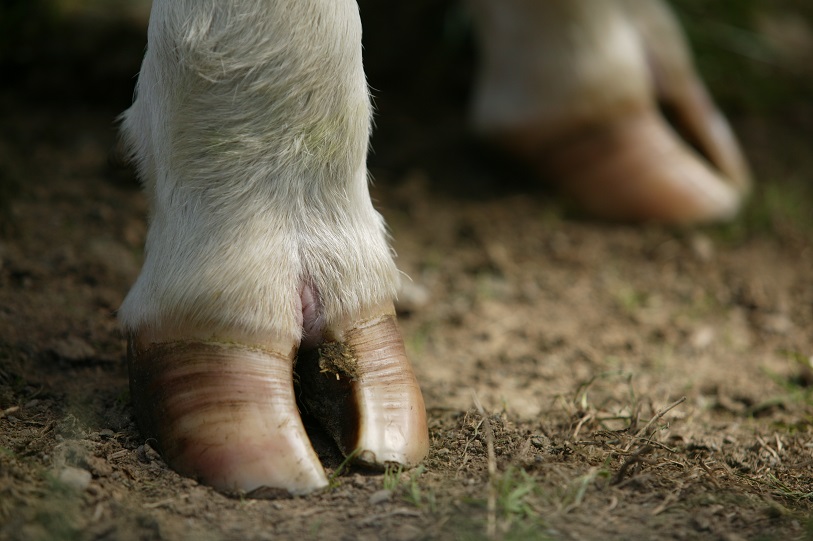- Home
- Knowledge library
- Preventing Digital Dermatitis Transmission on Farms (PhD)
Preventing Digital Dermatitis Transmission on Farms (PhD)
Summary
Summary/Key Findings
Bovine digital dermatitis (DD) is an infectious foot disease of cattle and causes lameness a large proportion of dairy herds worldwide. It is widely believed that DD is caused by a group of spiral-shaped bacteria called Treponema.
Spread of Digital dermatitis:
- DD can spread quickly between both individual animals and between cattle herds on different farms. Once a herd is infected, it can be difficult to control. Foot trimming has been identified as a risk factor for spreading the disease.
- Foot-trimming equipment (knives and gloves) can become contaminated with Treponema when used on animals with DD,
- Treponema can survive on the knives for two hours.
- Contaminated blades can transmitted Treponema to uninfected animals if the same equipment is used without disinfection.
- The risk of DD developing on a DD-negative farm is doubled when foot-trimming blades are not cleaned.
- Spread of infection can be reduced if trimming blades are disinfected for a short time between feet.
Foot trimming protocol
A disinfection protocol of cattle hoof knives and user gloves between animals and feet has been developed between AHDB and the University of Liverpool.
The protocol should be used when carrying out any foot trimming, including when trimming infected feet, other foot/horn presentations and healthy feet. It should be used together with other control strategies such as routine foot bathing and good slurry management on farm to help prevent the spread of DD.
About this project
Aims and Objectives
The main aim of this research is to:
1) develop on-farm protocols to eliminate DD treponeme infection reservoirs and
2) to communicate these to those working with cows’ feet and determine whether that advice is being used
3) to measure the impact of this research (and associated knowledge transfer) on improving both understanding and practice of all professionals who trim cows' feet to prevent the transmission of BDD between cattle during foot-trimming.



